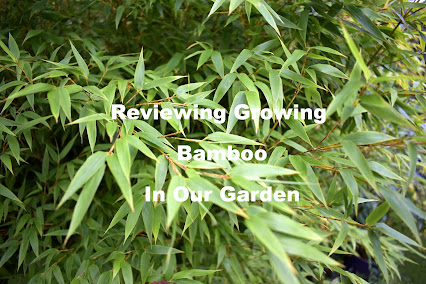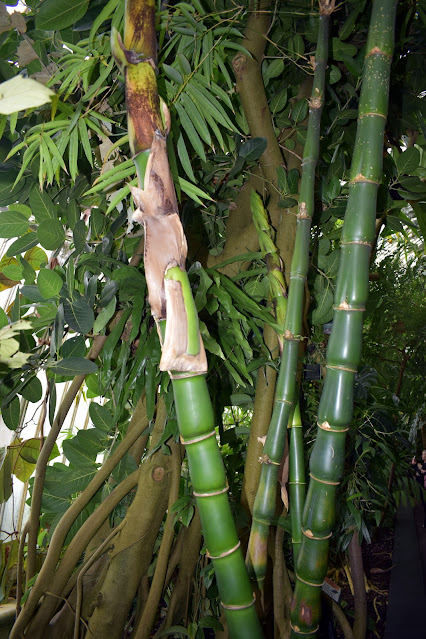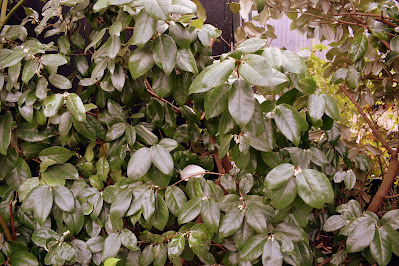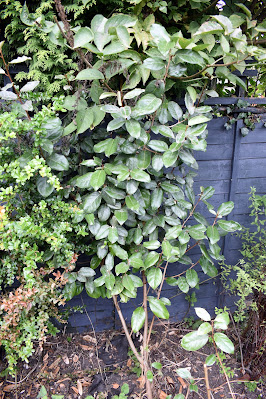I love gardening and like pretty much all aspects of it. However what I do not like is when various pests and diseases attack my plants. It is a conflicted point for me however as I do like to garden organically with nature and not generally use pesticides. Many of them will hurt beneficial insects as well somewhere down the line and as I am allergic to many things I have to be careful too.
Nature usually has a way of balancing things out and every pest has a predator and they need the other insects so I prefer to leave the garden to sort itself out and use nothing.
However, I see my beautiful plants this year in our very hot, humid summer with little rain really stressing the plants and leaving them vulnerable to disease. Some have suffered and are covered in fungal diseases and attacked by aphids and red spider mite and other creatures that I know will eventually kill the plants.
Then I know that I have a choice...
Either allow nature to fully take its course and risk the loss of plants that are dear to me, some given by my late parents, or take some action that has the least environmental effect.
So I researched that Neem oil can be a good solution if used safely and with some caveats.
It is antibacterial and antifungal so that will help with the fungal diseases. It also has insecticidal properties which disrupt the feeding and breeding cycles of some insects. I tried it this year for both issues and I have had some very good success!
How To use Neem Oil In The Garden
If it is used specifically and correctly Neem oil is not toxic to wildlife and pets, but you need to use it properly and carefully.
There are two ways to use Neem oil and I would suggest that you use them both if facing a fungal or insect attack that nature is not solving by herself.
Never use it in the daytime or in sunlight, this is bad for the plant and bad for the beneficial insects and predators in the garden.
1. For Drenching The Soil.
First of all give the plant a good soaking of water until it runs out of the base. The reason you water before hand is so that the soil gets wet, if you pour it on very dry soil it will just run straight through and you will waste the mixture. Then mix about two tablespoons of Neem oil with about a gallon of water and a small amount of mild liquid soap or washing up liquid. Shake it all up, then pour it around the base of the soil. If you don't need that much just adjust the ratios accordingly, it does not have to be too precise.
2. Spray Leaves
Then next you need to spray the leaves with the same mixture but in a spray bottle. Any spray bottle will do but it must be clean and not contaminated with any other chemicals. It is best to buy a new clear spray bottle and clearly label it. Spray the neem mix on the stems of the plant and both the top side and underside of the leaves. You can spray any left over on the soil around the plant.
The mixture needs to be applied about once a week. However if it rains then you need to reapply as soon is convenient once it has stopped raining. Watch for any signs for the disease or attack returning. When you think it is all clear then stop the applications. I have found I need to do it about three times before I can be fairly certain of success.
You can use pure Neem oil and do the mix yourself, which is what I usually do, or for convenience you can buy a ready made Spray. I have listed both options in this article.
Neem Oil as Organic Insecticide
Neem oil disrupts the feeding and breeding cycles of many insects. I am always a bit conflicted as I dislike interfering with natures processes, but there are times when I do take the decision to use this more organic method. I only use it against those that are overwhelming the plant and causing significant damage or will kill the plant.
If they are just a nuisance but do not cause any real damage I leave it. If it is just the temporary look of the plant that is affected I leave it to nature to sort it out. I prefer to leave natures predators to it.
If I have to intervene to save the plant, it is said to be effective against many insects considered pests. My main experience with neem oil is with aphids. Neem oil is in my experience most effective against Aphids which this year attacked my Lupins while I was away and came back to an almost decimated plant.
It is best if you first cut away the affected leaves and stems and dispose of them.
I sprayed with the neem mix three times over 3 weeks and while the older leaves and stems died, the younger and new growth came through healthy.
It is also in my experience effective against Whiteflies and spider mites. It acts on their hormones preventing them from laying eggs. I found for me the magic number is to apply neem oil mix three times about a week apart, both to the leaves and the soil.
Neem Oil As A Fungicide
Neem oil helps with fungal diseases including powdery mildew, rust and black spot.
It assists to prevent fungal spores from germinating and spreading which is especially helpful if you grow plants closer together to help prevent widespread infections. It also usefully provides a protective layer or barrier on the sprayed leaves.
I am happy to use Neem oil under safe conditions for this purpose. In my experience within two or three weeks the situation is under control.
Best Naturals 100% Pure Neem Oil, 100% Cold Pressed and Unrefined - 16 OZ (1 Bottle)Check PriceMonterey Neem Oil Spray for Plants Ready to Use - for Use on Roses, Flowers, Houseplants, and Vegetables - 32 ozCheck Price
How To Use Neem Oil Safely And What To Avoid.
For Plants
- Some plants are very sensitive to Neem oil. It particularly affects those with delicate leaves and is best to avoid. If you do use it on these plants, use a significantly diluted mixture, do a small patch test and watch for a few days.
- Prevention is always better. Ideally, and this goes for all plants really, before any issues arise, try companion planting with plants that are highly scented and more resistant to the bugs that like to attack. So try Lavender, Garlic, Onions, perhaps Rosemary as companion plants to those you find are vulnerable to pests.
- Never apply in the daytime as it can and will burn and scorch the plant. Wait until dusk.
- Check over the plant for any beneficial insects before you spray, particularly ladybirds or lady bugs or hoverflies might be on an infested plant. They are predators and do an excellent job of eating pests, so if there are a lot of ladybirds and hoverflies on the plant they may well do the job for you. In that case I would personally leave them to it.
- However if there is just one ladybird or the plant is clearly overwhelmed with pests, simply remove the one or few ladybirds first. It is another good reason for not spraying in the daytime, wait until the beneficial predators and bees and butterflies are have left or are much less active.
For Humans
While generally not harmful to humans there are some important caveats.
- Store it out of reach of children or pets in a safe place.
- Do not have any contact with Neem oil if pregnant or breastfeeding.
- Always wear gloves and protective glasses when preparing and spraying the mix as it is irritating to skin and eyes. As I have extremely sensitive skin, I cover up all my skin when using it and wear sunglasses or protective glasses that wraparound.
- Do not use or prepare the neem pure or mixture near young children or pets, as it is possible they may inhale, lick or eat some of it when it is still wet, which is not advised.
For Nature And Animals
- While pretty much non toxic to much of nature like birds, bees and mammals once dry, it is somewhat toxic to fish and aquatic life. So we must never spray near a pond, stream, water barrel or other water source. However Neem oil is not known to contaminate ground water or run off and is biodegradable.
- Do not use neem oil during the day as this is when pollinators and many predators are around on your plants. Bees and butterflies and other beneficial insects are at danger when it is still wet. Bees can carry it back to a nest and it could cause harm. Once it is dry the risk is no longer present. Hence the need to use only at dawn or dusk when they are much less likely to be around.
- Personally I only use at dusk because you must use it so that it dries before any beneficial insects and pollinators are active. Most of my issues happen in the summer and as it is light so early the bees are often up before I am! Once it dries, in about an hour, it is then harmless to bees, butterflies etc.
Storing and Using Neem Oil
It must be stored in a dark, cool and safe place as if it is exposed to sunshine or bright light and heat it will go off.
If you are mixing it yourself only make the amount you need to use on that day, as the home mix goes off quite quickly once made up.
So while I do not really like to use anything on my garden I will sometimes use a Neem oil mixture. I have worked hard to get a good balance and usually have plenty of predators to balance out the pests. Most of the time I allow nature to take its course with predators and prey in the garden and using companion planting.
However, if one of my treasured or sentimental plants is suffering an infestation or disease and the natural predators and processes cannot get it under control, I very carefully use Neem oil in moderation and as little as possible. In my experience it is an effective and economical product
Read More Product Reviews on
Read More Reviews by Raintree Annie
Read More Gardening Reviews on ReviewThisGardening.com
Read Diary Of A Wild Country Garden Blog
Visit Raintree Earth Designs for gifts and cards designed with nature photography
Reviewing Benefits And Uses Of Neem Oil For The Garden by Raintree Annie












































